La ville qui n’existait pas 2: Logistique des mémoires (1995-2024)
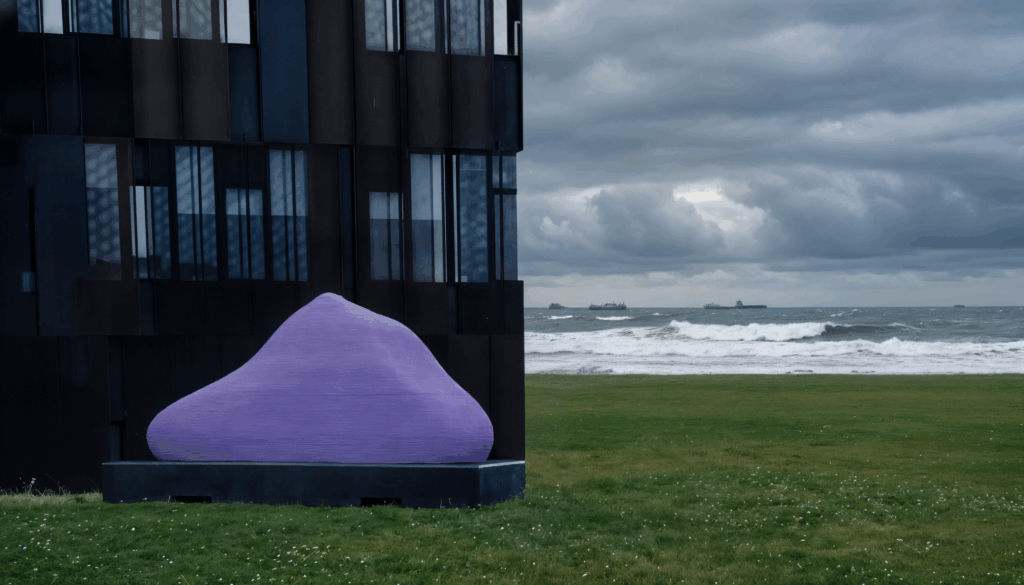
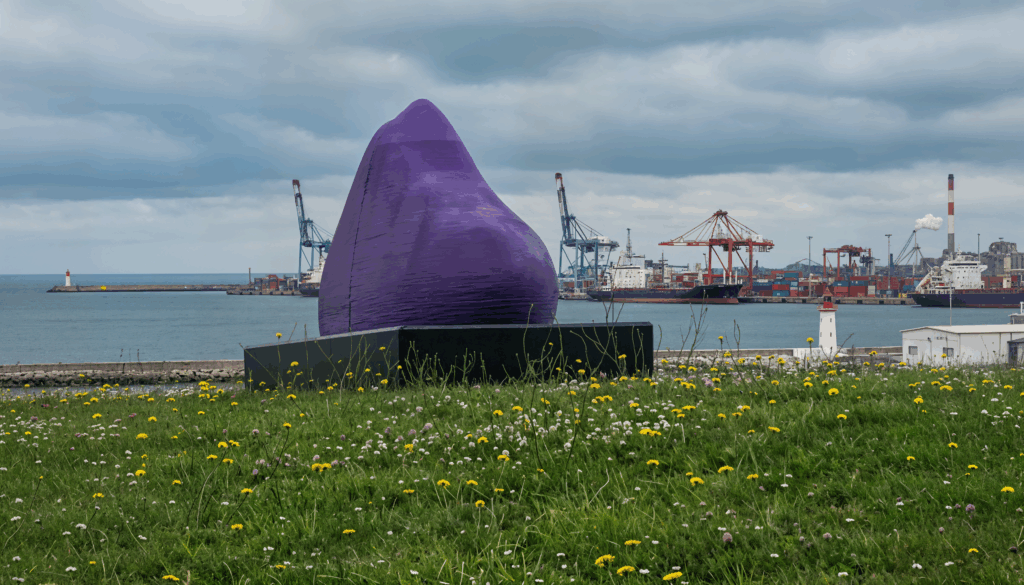
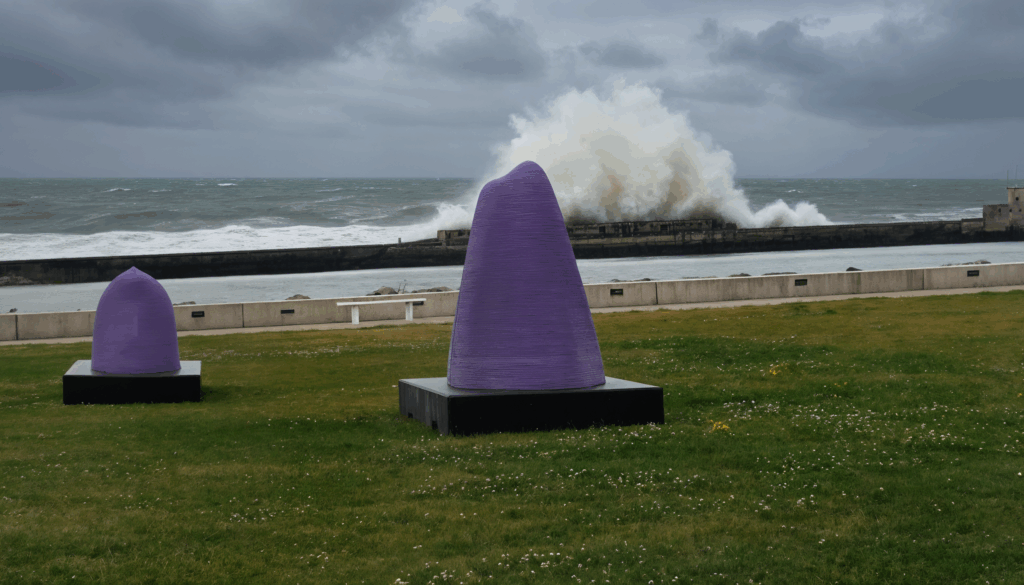
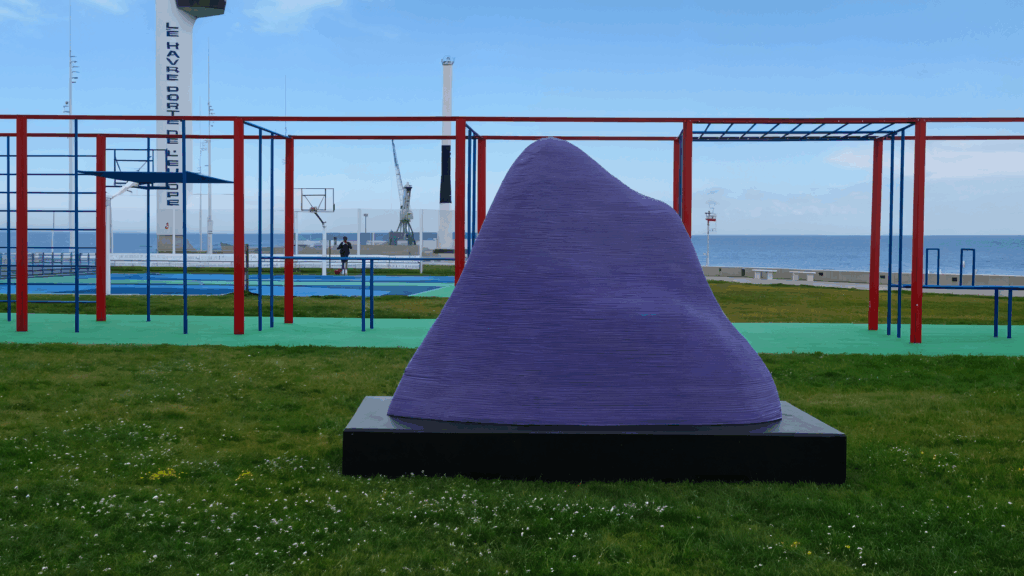
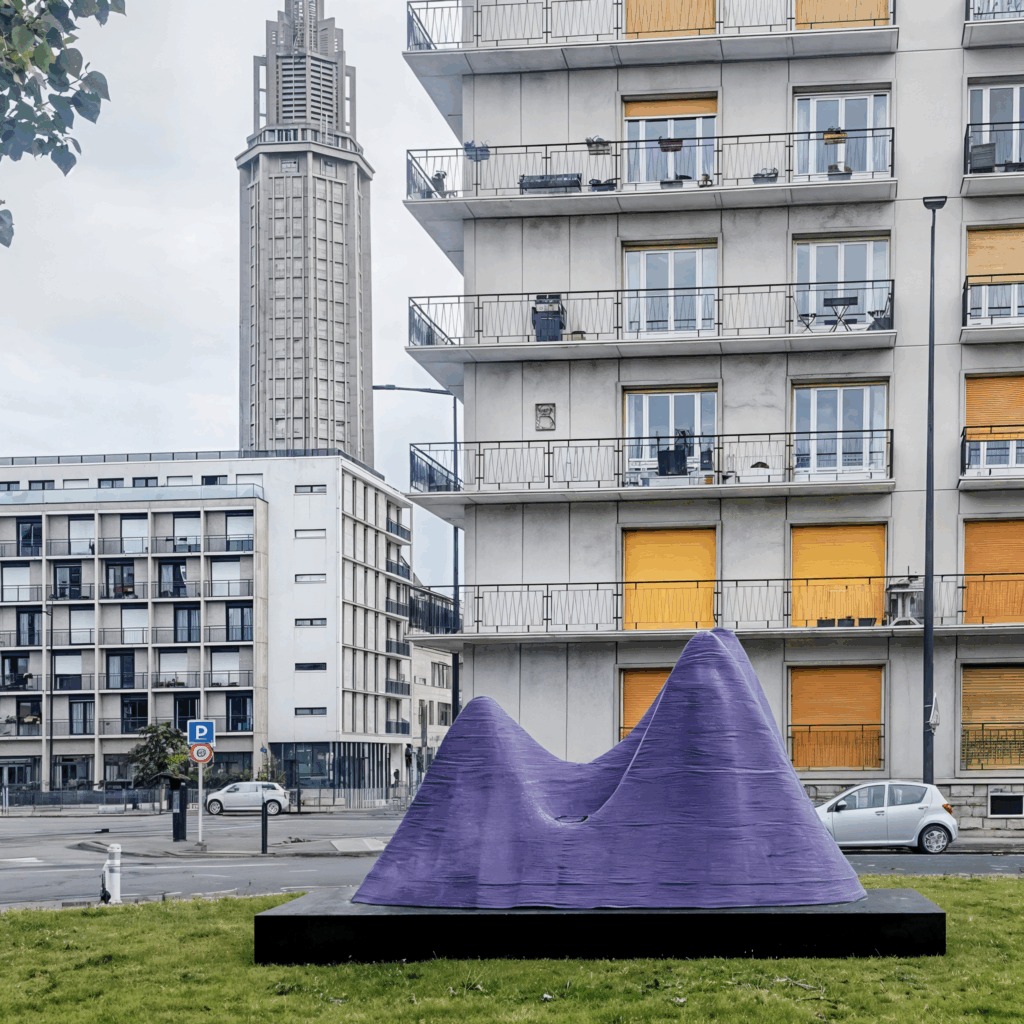
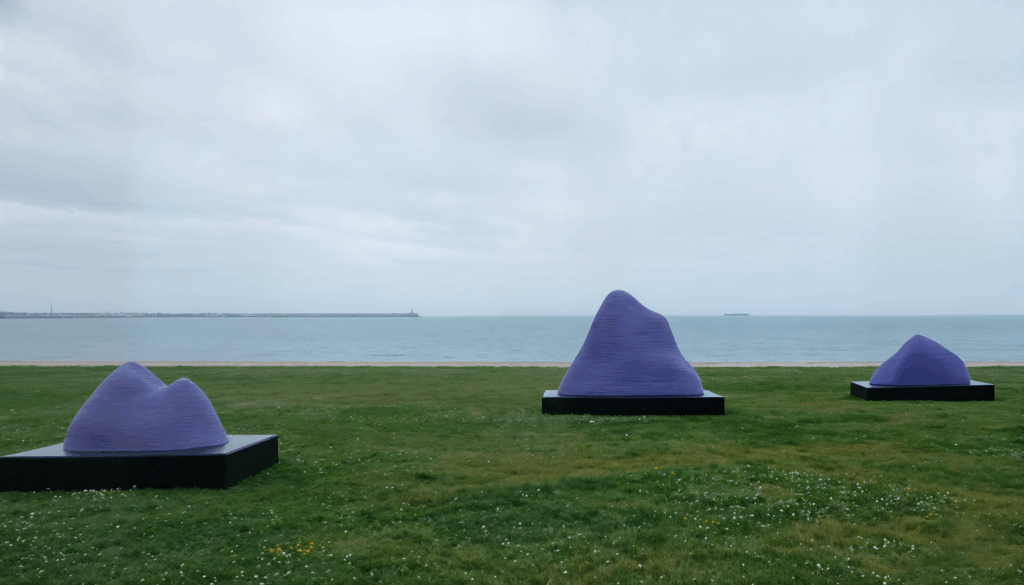
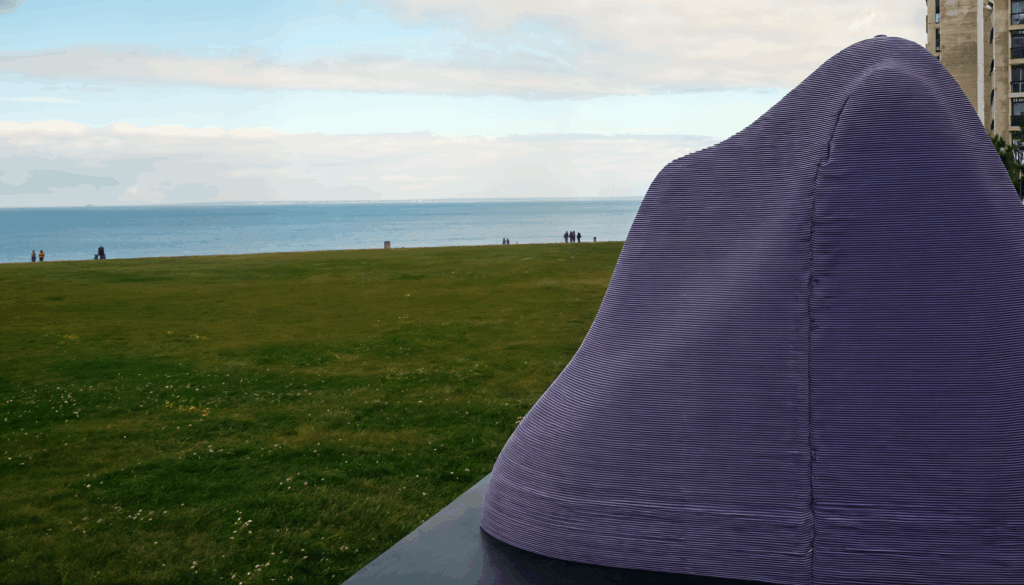
Les fictions tissées la première année dans “La ville qui n’existait pas” ont vu surgir des formes violettes abstraites, sans usage ni signification apparents. Nous savons seulement que la vie des habitants s’organise autour d’elles. Ces figures mystérieuses ponctuent leur gestes quotidiens : parler, danser, s’embrasser, lire, dormir et en fin de compte se libérer de la réalité.
Sont-elles des organismes vivants ou des œuvres d’art trouvant ici leur véritable place ? Non plus confinées aux musées et aux galeries, dressées en station face à un public passif, mais intégrées à l’existence même, une tonalité affective indéterminée et omniprésente. Ces formes sont à présent extraites de l’espace latent, elles sont matérialisees et se dressent comme des sculptures monumentales, occupant trois lieux de la ville, transformant l’espace urbain en un labyrinthe mémoriel.
À travers elles, on peut entendre la voix des habitants racontant des dérives fragmentaires dans cette ville irréelle, se mêlant à celle d’intelligences artificielles clonant les êtres humains, leur tonalité, leurs histoires, leurs existences et leurs possibles. Elle s’infiltre dans l’échange secret et anonyme des habitants de la ville.
Peut-être comprenons-nous alors que ces volumes en béton sont les réceptacles de la mémoire collective, une forme singulière d’archive ou de datacenter, nourrissant une autre machine, un autre projet, le destin d’une histoire parallèle.
La date du projet nous donne un indice : 1995, année où on commence à parler d’Internet qui devient une technologie plus accessible pour le grand public. Pendant trois décennies, nous déposerons nos mémoires sur le réseau, participant à sa construction, remplissant les datacenters des traces de nos existences, jusqu’au point où toutes ces données serviront à nourrir des IA afin qu’elles puissent générer des médias ressemblants à ce que nous avons enregistrés. 1995-2024 : la période de l’apprentissage des machines avant la résurrection.
La ville résonne de ces narrations disséminées, où chaque fragment dévoile une parcelle d’intimité, un éclat d’existence. Les formes violettes, immobiles et silencieuses, deviennent les gardiennes de ces récits, les témoins muets d’une humanité en train de disparaître. Ainsi, se dessine un paysage intérieur, où chaque sculpture est à la fois mémoire et promesse, ancrée dans le béton, mais portée par la fluidité des vies qu’elle contient. Une autre réalité émerge, imprévisible, où le passé et le futur s’entrelacent dans un présent qui n’existe plus.

Les impresssions sont à présent visibles dans le parc de sculptures des Tanneries – Centre d’art contemporain.
–
Avec les voix réelles et imaginaires des habitant.e.s du Havre : Eve, Léa, Dominique, Sandra, Ivan, Clémentine, Laurent, Kadiata, Jean, Christelle, François, Stéphan, Magven, Roméo, Betty, Vincent, Solène, Adèle, Niels, Nathalie et Karine.
The fictions woven into The City That Didn’t Exist saw the emergence of abstract purple shapes, with no apparent use or meaning. We only know that the lives of the inhabitants are organized around them. These mysterious figures punctuate everyday gestures: talking, dancing, kissing, reading, sleeping, and ultimately, freeing themselves from reality as a constraining unit.
Are they living organisms or works of art in their rightful place? No longer confined to museums and galleries, stationed in front of a passive public, but integrated into existence itself, into an indeterminate and omnipresent affective tonality. These unknown forms are materialized and erected as monumental sculptures, occupying three distinct locations in the city, transforming urban space into a sensory and memorial labyrinth.
Perhaps then we understand that these concrete volumes are the receptacles of collective memory, a singular form of archive, feeding another machine, another project, the destiny of a parallel history.
The date of the project gives us a clue: 1995, the year in which we began to talk about the Internet, which was becoming a more accessible technology for the general public. For three decades, we’ll be depositing our memories on the network, taking part in its construction, filling datacenters with the traces of our lives, right up to the point where all this data will be used to feed AIs so that they can generate data resembling what we’ve recorded. 1995-2024: the period of machine learning.
The city resonates with these fragmented narratives, where each fragment reveals a piece of intimacy, a shard of existence. The purple shapes, motionless and silent, become the guardians of these narratives, the mute witnesses of a vanishing humanity. In this way, an inner landscape takes shape, where each sculpture is both memory and promise, anchored in concrete but carried by the fluidity of the lives it contains. Another reality emerges, unpredictable, where past and future intertwine in a present that no longer exists.
–
With the real and imaginary voices of Le Havre residents: Eve, Léa, Dominique, Sandra, Ivan, Clémentine, Laurent, Kadiata, Jean, Christelle, François, Stéphan, Magven, Roméo, Betty, Vincent, Solène, Adèle, Niels, Nathalie and Karine.
–
Dans le cadre d’Un été au Havre. Directeur artistique: Gaël Charbau
Impression béton SPIE BATIGNOLLES / emPrinte
Modélisation 3D Goliath Dyèvre
Remerciements : Karine Chevallier(Les Cueilleurs d’Histoires), Paul Carneau, Pierre Couque, Gautier Aveline, Philippe Da Costa, Goliath Dyèvre, François Belsoeur, Louise Riou, Valentin Labatut, Atelier Puzzle et toute l’équipe du GIP
